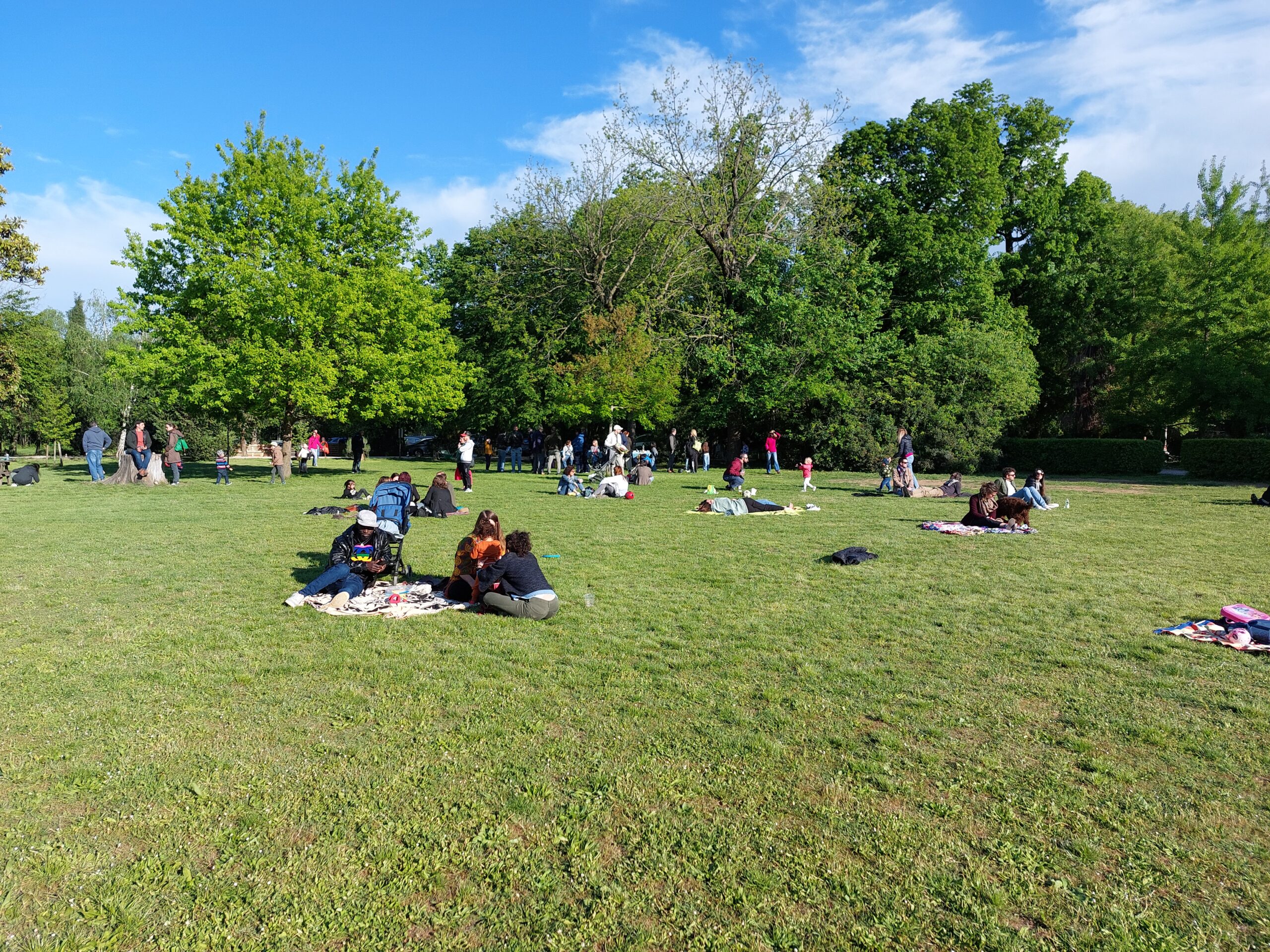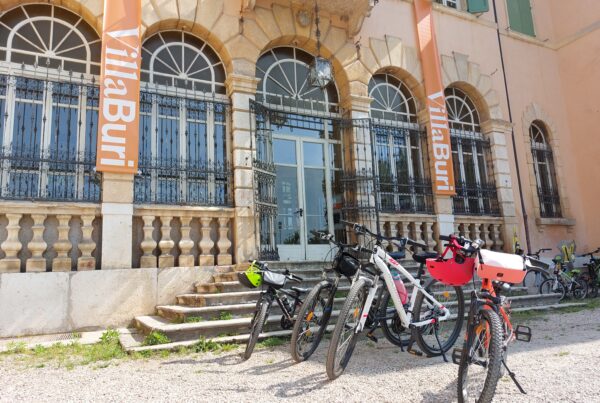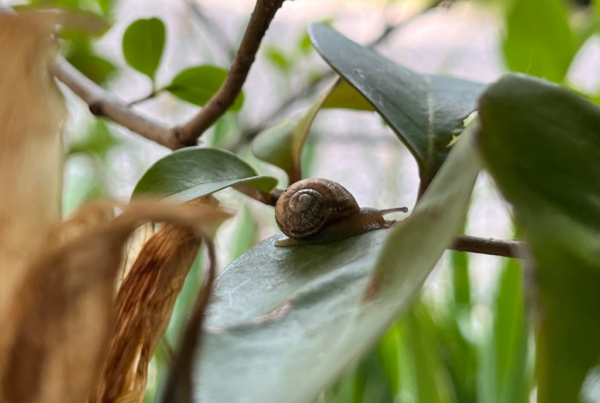Gli spazi verdi, come i parchi, i giardini e gli alberi, sono componenti essenziali di un ambiente urbano sano e sostenibile. Il fatto che un’area verde sia considerata naturale dipende dall’interferenza degli esseri umani nel suo sviluppo. Alberi, piante o arbusti sono di solito presenti in spazi verdi urbani o suburbani utilizzati per momenti ricreativi. Tuttavia, è necessario ricordare la loro importanza al fine di garantirne una continua tutela e protezione.
L’integrazione degli spazi verdi nella pianificazione urbana risulta quindi fondamentale: non solo offrono numerosi vantaggi ambientali, ma contribuiscono anche al miglioramento della qualità della vita delle persone residenti.
Attività fisica
Gli studi hanno dimostrato che i livelli di attività fisica delle persone possono essere influenzati dall’ambiente urbano in cui si vive. I parchi e altri spazi verdi all’interno delle città, in particolare, offrono alle persone un luogo sicuro e accessibile in cui poter allenarsi senza allontanarsi troppo dalle proprie case.
Salute mentale
Trascorrendo più tempo all’aperto, le capacità cognitive, la concentrazione e i livelli di stress migliorano. Trascorrere del tempo all’aria aperta aumenta le probabilità che le persone esprimano alti livelli di godimento e benessere; diminuisce inoltre la possibilità di provare depressione e disturbi d’ansia.
Vivibilità della città
Il carattere e l’identità delle aree urbane sono valorizzati dalla presenza di parchi e altre aree verdi, creando un senso di appartenenza. Oltre a offrire opportunità di svago e relax, gli spazi verdi fungono anche da cuscinetto tra strade trafficate e aree residenziali, riducendo l’inquinamento acustico. L’acustica delle aree urbane viene quindi migliorato, rendendole più piacevoli e tranquille.
VILLA BURI è un POLMONE VERDE della città di Verona
Villa Buri è un perfetto esempio di una zona verde in città, nella zona della Villa ci sono 1887 alberi tracciati, compresi quelli secolari, per circa 59 specie diverse. Gli alberi della zona sono in grado di assorbire grandi quantità di CO₂ e PM10 e oltre a ciò creano un ambiente piacevole. Grazie al tracciamento fatto da Villa Buri sui suoi alberi abbiamo accesso ad alcuni dati interessanti come CO₂ e PM10 assorbiti e la CO₂ immagazzinata da ogni albero.
Ecco alcuni esempi:
- L’albero numero 1261 assorbe circa 590 kg/anno di CO₂ e 0,1 kg/anno di PM10;
- L’albero numero 1616 assorbe 436 kg/anno di CO₂ e 0,2 kg/anno di PM10 e oltre ciò abbatte inquinanti come O3, NO₂ e SO₂;
- L’albero numero 333 assorbe 219 kg/anno di CO₂ e 0,1 kg/anno di pm10 e come il numero di albero 1616 abbatte inquinanti quali O3, NO₂ e SO₂.
Urban Green Lungs for a Better Quality of Life in Cities
Green spaces, such as parks, gardens, and trees, are essential components of a healthy and sustainable urban environment. Whether a green area is considered natural depends on whether humans have interfered with its development. Trees, plants, or shrubbery are usually present in urban or suburban green spaces, which are usually used for recreation. However, there are times when they are protected due to their importance to the environment.
Incorporating green spaces into city planning is crucial as it not only provides many environmental benefits but also enhances the quality of life of urban residents.
Physical activity
Studies have shown that people’s levels of physical activity may be affected by the urban environment. Parks and other urban green spaces, in particular, give people a safe and accessible place to exercise without being too far from their homes.
Mental health
By spending more time outdoors, cognitive abilities, concentration, and stress levels are improved. Spending time outdoors increases people’s chances of expressing high levels of enjoyment and well-being and decreases their chances of experiencing depression and anxiety disorders.
Livability of city
The character and identity of urban areas are enhanced by parks and other green areas within a city, creating a sense of place. Apart from providing opportunities for recreation and relaxation, green spaces also act as a buffer between busy roads and residential areas, reducing noise pollution. The acoustic environment of urban areas is improved by this, making them more pleasant and peaceful.
VILLABURI is a GREEN LUNG in Verona
Villa Buri is a perfect example of a green area in a city, in the garden of the Villa there are 1887 tracked trees, including centuries old ones, for about 59 different species.The trees in the area are capable of absorbing big quantities of CO2 and PM10 and beyond that they create a pleasant sight.
Thanks to the tracking did by VillaBuri on its trees we have access to some interesting data such as the CO2 and PM10 absorbed and the CO2 stored by each tree.
Here we have some exmples:
- Tree number 1261 absorbs approximately 590 kg/year of CO2 and 0.1 kg/year of PM10;
- Tree number 1616 absorbs 436 kg/year of CO2 and 0.2 kg/year of PM10 and on top of that it break downs pollutants such as O3, NO2 and SO2;
- Tree number 333 absorbs 219 kg/year of CO2 and 0.1 kg/year of PM10 and like the tree number 1616 it break downs pollutants such as O3, NO2 and SO2.
References – FONTI
“The importance of incorporating green spaces in city planning” su ecomatcher
“10 ways to create green spaces in cities” su greencitytimes






